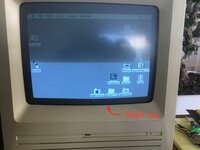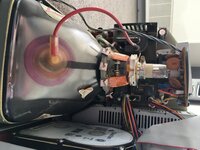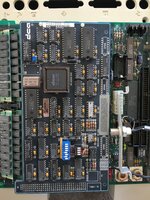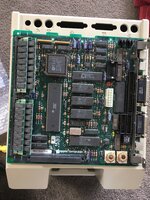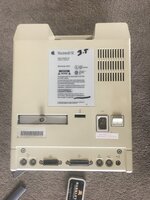greystash
Well-known member
After years of neglect I finally pulled my SE FD/HD out of the closet, opened it up and gave it a brief clean. It looks surprisingly good after a thorough air dusting, and I can't see evidence of the capacitors leaking yet. I'm going to re-cap it and will give it a good alcohol clean when I do this. I did notice one component has a rusted leg (maybe the beginnings of leaky capacitors). I just have a few questions that can hopefully some of you will be able to answer:
- What is the component and value at Y1 with the rusting leg? I'll replace this if I can find another.
- There are some dark spots along a lot of the traces, is this an issue or part of the production process?
- Some of the capacitors have their values obscured, are all the ones on the logic board 16v 33uf?
- I installed a big Quantum HD years ago and it's very close to the CRT. I've noticed that whenever it's loading something the clicks shake/distort the screen. The image is starting to sag at the bottom also (which I think is a more recent change), could this be due to the HD? I plan on replacing it with a SCSI2SD soon.
- I installed a network card which I've had for a few years that I believe is an Ethernet card. It has a coax(?) port but I'm not sure what sort of adapter I should be using here. Any ideas?
Thank you in advance!
- What is the component and value at Y1 with the rusting leg? I'll replace this if I can find another.
- There are some dark spots along a lot of the traces, is this an issue or part of the production process?
- Some of the capacitors have their values obscured, are all the ones on the logic board 16v 33uf?
- I installed a big Quantum HD years ago and it's very close to the CRT. I've noticed that whenever it's loading something the clicks shake/distort the screen. The image is starting to sag at the bottom also (which I think is a more recent change), could this be due to the HD? I plan on replacing it with a SCSI2SD soon.
- I installed a network card which I've had for a few years that I believe is an Ethernet card. It has a coax(?) port but I'm not sure what sort of adapter I should be using here. Any ideas?
Thank you in advance!



